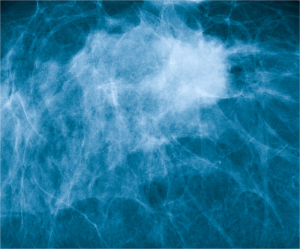por
Lauren Dubinsky, Senior Reporter | March 25, 2016
Researchers at the National Institute of Standards and Technology (NIST) have developed a set of standards for breast MR imaging that is currently being used by five research groups for clinical trials. The standards were created utilizing a phantom designed to mimic the response of human tissue in order to help evaluate how the body responds to MR exams, and are outlined in the
Journal of Magnetic Resonance Imaging.
“The initial impact of this phantom will be to improve upcoming clinical trials to develop and validate advanced MRI protocols for breast cancer,” Stephen E. Russek, project leader of biomagnetic imaging standards at the NIST, told HCB News.
“Farther down the line we hope this phantom will be incorporated in clinical practice to assess the accuracy and stability of MR breast imaging at each site as well as providing a tool for MR technicians and physicists to detect and correct errors in the imaging process,” he added.



Ad Statistics
Times Displayed: 194156
Times Visited: 5654 For those who need to move fast and expand clinical capabilities -- and would love new equipment -- the uCT 550 Advance offers a new fully configured 80-slice CT in up to 2 weeks with routine maintenance and parts and Software Upgrades for Life™ included.
NIST's phantom is able to test quantitative MR, which is being used more to diagnose, stage and provide treatment monitoring for breast cancer.
Unlike other phantoms for breast MR, NIST's phantom can be used on most major MR systems for a full range of common clinical imaging needs. In addition, the image data that the phantom generates can be traced to international measurement standards.
The phantom is designed to resemble the fat and fibroglandular tissue of a breast. It has a soft silicone shell so that it can fit different MR scanners and the insides are made up of rigid polycarbonate.
The phantom has two types of internal arrangements based on the kind of MR that is being tested. For conventional MRs, the internal arrangements are made up of four layers of small plastic spheres filled with their corn syrup in water to mimic fibroglandular tissue and grapeseed oil to mimic fat.
For a newer technique called diffusion MR, the internal arrangements contain plastic tubes filled with different concentrations of nontoxic polymer. The solutions are supposed to mimic the different diffusion properties of malignant and benign tumors.
“Sophisticated imaging techniques, which can quantitatively measure parameters such as diffusion and perfusion in breast tissue, can potentially be used to determine the type of lesion and whether it may be benign or malignant,” said Russek. “This type of quantitative imaging may reduce the need for painful biopsies and provide more comprehensive information.”
The researchers are continuing to work on the NIST breast MR phantom. Natural oils like grapeseed oil can vary in consistency, so the researchers are starting to use synthetic oil, which remains stable across production batches and over time.
In addition, a multi-center trial is planning on evaluating measurement variations at clinical imaging centers.

